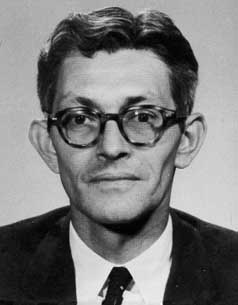 W
WJames Jesus Angleton was chief of CIA Counterintelligence from 1954 to 1975. His official position within the organization was Associate Deputy Director of Operations for Counterintelligence (ADDOCI). Angleton was significantly involved in the US response to the purported KGB defectors Anatoliy Golitsyn and Yuri Nosenko. Angleton later became convinced the CIA harbored a high-ranking mole, and engaged in an intensive search. Whether this was a highly destructive witch hunt or appropriate caution vindicated by later moles remains a subject of intense historical debate.
 W
WThe Benson House, listed on the National Register of Historic Places as the Wading River Radio Station, is a three-story, red-shingled wood-frame home in Wading River, New York, situated on the North Shore of Long Island, on a 150-foot-high (46 m) bluff overlooking Long Island Sound. From 1942 until 1945 it housed an important World War II counterintelligence operation, designed to deceive Germany and Japan about Allied war plans.
 W
WCaptain Sigismund Payne Best OBE was a British Secret Intelligence Service agent during the First and Second World Wars. He was captured by German Gestapo and Sicherheitsdienst (SD) men on 9 November 1939 in the Venlo Incident.
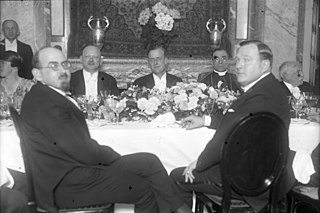 W
WGeorges Blun was a French journalist and intelligence agent who was the Berlin correspondent of the Journal de Paris.
 W
WOperation Bolívar was the codename for the German espionage in Latin America during World War II. It was under the operational control of Department VID 4 of Germany's Security Service, and was primarily concerned with the collection and transmission of clandestine information from Latin America to Europe. Overall, the Germans were successful in establishing a secret radio communications network from their control station in Argentina, as well as a courier system involving the use of Spanish merchant vessels for the shipment of paper-form intelligence.
 W
WCamp X was the unofficial name of the secret Special Training School No. 103, a Second World War British paramilitary installation for training covert agents in the methods required for success in clandestine operations. It was located on the northwestern shore of Lake Ontario between Whitby and Oshawa in Ontario, Canada. The area is known today as Intrepid Park, after the code name for Sir William Stephenson, Director of British Security Co-ordination (BSC), who established the program to create the training facility.
 W
WA code talker was a person employed by the military during wartime to use a little-known language as a means of secret communication. The term is now usually associated with United States service members during the world wars who used their knowledge of Native American languages as a basis to transmit coded messages. In particular, there were approximately 400 to 500 Native Americans in the United States Marine Corps whose primary job was to transmit secret tactical messages. Code talkers transmitted messages over military telephone or radio communications nets using formally or informally developed codes built upon their native languages. The code talkers improved the speed of encryption and decryption of communications in front line operations during World War II.
 W
WThe Office of the Coordinator of Inter-American Affairs, later known as the Office for Inter-American Affairs, was a United States agency promoting inter-American cooperation (Pan-Americanism) during the 1940s, especially in commercial and economic areas. It was started in August 1940 as OCCCRBAR with Nelson Rockefeller as its head, appointed by President Franklin Delano Roosevelt.
 W
WThe Duquesne Spy Ring is the largest espionage case in the United States history that ended in convictions. A total of 33 members of a German espionage network headed by Frederick "Fritz" Joubert Duquesne were convicted after a lengthy investigation by the Federal Bureau of Investigation (FBI). Of those indicted, 19 pleaded guilty. The remaining 14 were brought to jury trial in Federal District Court, Brooklyn, New York, on September 3, 1941; all were found guilty on December 13, 1941. On January 2, 1942, the group members were sentenced to serve a total of over 300 years in prison.
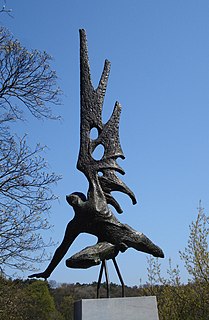 W
WEnglandspiel, or Operation North Pole, was a successful counter intelligence operation of the Abwehr from 1942 to 1944 during World War II. German forces captured Allied resistance agents operating in the Netherlands and used the agents' codes to dupe the United Kingdom's clandestine organization, the Special Operations Executive (SOE), into continuing to infiltrate agents, weapons, and supplies into the Netherlands. The Germans captured nearly all the agents and weapons sent by the United Kingdom (Britain).
 W
WHans Bernd Gisevius was a German diplomat and intelligence officer during the Second World War. A covert opponent of the Nazi regime, he served as a liaison in Zürich between Allen Dulles, station chief for the American OSS and the German Resistance forces in Germany.
 W
WGeneralmajor Erwin von Lahousen was a high-ranking Abwehr official during the Second World War, as well as a member of the German Resistance and a key player in attempts to assassinate Adolf Hitler on 13 March 1943 and 20 July 1944.
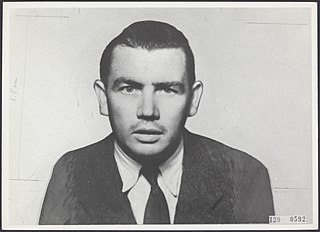 W
WChristiaan Antonius Lindemans was a Dutch double agent during the Second World War, working under Soviet control. Otherwise known as Freddi Desmet, a Belgian army officer and SOE agent with security clearance at the Dutch Military Intelligence Division of the SOE (MID/SOE). He is better known under his nickname "King Kong" or in some circles as "le Tueur" as he undertook missions to kill and was ready to shoot at the slightest provocation. There is speculation that Lindemans was a member of Colonel Claude Dansey's Z organisation.
 W
WThe Military Intelligence Service was a World War II U.S. military unit consisting of two branches, the Japanese American unit described here and the German-Austrian unit based at Camp Ritchie, described partly in Ritchie Boys. The unit described here was primarily composed of Nisei who were trained as linguists. Graduates of the MIS language school (MISLS) were attached to other military units to provide translation, interpretation, and interrogation services.
 W
WThe Naval Intelligence Division (NID) was created as a component part of the Admiralty War Staff in 1912. It was the intelligence arm of the British Admiralty before the establishment of a unified Defence Intelligence Staff in 1964. It dealt with matters concerning British naval plans, with the collection of naval intelligence. It was also known as "Room 39", after its room number at the Admiralty.
 W
WThe Office of Strategic Services (OSS) was a wartime intelligence agency of the United States during World War II, and a predecessor to the Department of State's Bureau of Intelligence and Research (INR) and the Central Intelligence Agency (CIA). The OSS was formed as an agency of the Joint Chiefs of Staff (JCS) to coordinate espionage activities behind enemy lines for all branches of the United States Armed Forces. Other OSS functions included the use of propaganda, subversion, and post-war planning. On December 14, 2016, the organization was collectively honored with a Congressional Gold Medal.
 W
WOperation Elster was a German espionage mission intended to gather intelligence on U.S. military and technology facilities during World War II. The mission commenced in September 1944 with two Nazi agents sailing from Kiel, Germany on the U-1230 and coming ashore in Maine on November 29, 1944. The agents were William Colepaugh, an American-born defector to Germany, and Erich Gimpel, an experienced German intelligence operative. They spent nearly a month living in New York City, expending large amounts of cash on entertainment, but accomplishing none of their mission goals.
 W
WOperation Pastorius was a failed German intelligence plan for sabotage inside the United States during World War II. The operation was staged in June 1942 and was to be directed against strategic American economic targets. The operation was named by Admiral Wilhelm Canaris, chief of the German Abwehr, for Francis Daniel Pastorius, the leader of the first organized settlement of Germans in America.
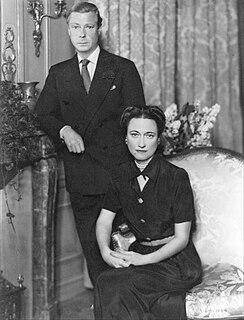 W
WOperation Willi was the German code name for the unsuccessful attempt by the SS to kidnap Edward, Duke of Windsor in July 1940 and induce him to work with German dictator Adolf Hitler for either a peace settlement with Britain, or a restoration to the throne after the German conquest of the United Kingdom.
 W
WOperation Pelikan, also known as Projekt 14, was a German plan for crippling the Panama Canal during World War II. In mid-late 1943 the Wehrmacht had completed preparations to haul two Ju 87 Stukas with folding wings on two U-boats to an unnamed Colombian island near the coast of Panama, reassemble the planes, arm them with "special bombs", and then send them to attack the Gatun Dam. After completing the mission, the pilots would fly to a neutral country and seek internment. However, Germany called off the plan, for unknown reasons, at the last minute. Rumors among the Germans who planned the sabotage were that it had been called off due to betrayal.
 W
WThe Red Orchestra, as it was known in Germany, was the name given by the Abwehr Section III.F to anti-Nazi resistance workers in August 1941. It primarily referred to a loose network of resistance groups, connected through personal contacts, uniting hundreds of opponents of the Nazi regime. These included groups of friends whose held discussions that were centred around Harro Schulze-Boysen and Arvid Harnack in Berlin, alongside many others. They printed and distributed illegal leaflets, posters, and stickers hoping to incite civil disobedience; helped Jews and opposition escape the regime; documented the crimes of the Nazi regime; and forwarded military intelligence to the Allies. Contrary to legend, the Red Orchestra was neither directed by Soviet communists nor under a single leadership but a network of groups and individuals, often operating independently. To date, about 400 members are known by name.
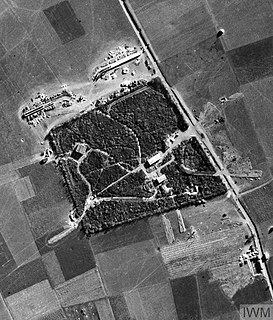 W
WThe Réseau AGIR was a World War II espionage group founded by French wartime resister Michel Hollard that provided decisive human intelligence on V-1 flying bomb facilities in the North of France. Thanks to Hollard's reports and information from his agents of the Réseau AGIR, the V1 launch sites located across North-Eastern Normandy to the Strait of Dover, were systematically bombed during Operation Crossbow.
 W
WSalon Kitty was a high-class Berlin brothel used by the Nazi intelligence service, the Sicherheitsdienst (SD), for espionage purposes during World War II.
 W
WWalter Friedrich Schellenberg was a German SS functionary during the Nazi era. He rose through the ranks of the SS, becoming one of the highest ranking men in the Sicherheitsdienst (SD) and eventually assumed the position as head of foreign intelligence for Nazi Germany following the abolition of the Abwehr in 1944.
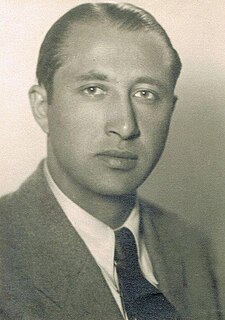 W
WDušan "Duško" Popov was a Serbian triple agent who served as part of the MI6 and Abwehr during World War II, and passed off disinformation to Germany as part of the Double-Cross System and working also as agent for the Yugoslav government-in-exile in London.
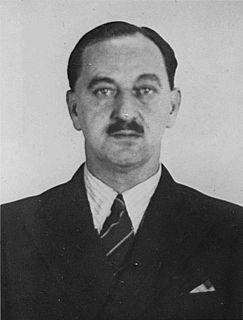 W
WRichard Henry Stevens was a major in the British Indian Army and from 1939 Head of the Passport Control Office (PCO) of the British Secret Intelligence Service in the Netherlands. His name is closely associated with the Venlo Incident in 1939.
 W
WThe Venlo incident was a covert German Sicherheitsdienst operation on 9 November 1939, in the course of which two British Secret Intelligence Service agents were captured five meters (16 ft) from the German border, on the outskirts of the Dutch town of Venlo.
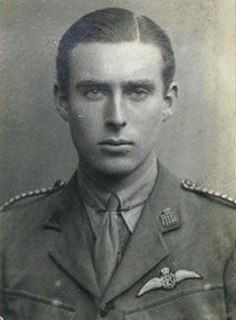 W
WFrederick William Winterbotham was a British Royal Air Force officer who during World War II supervised the distribution of Ultra intelligence. His book The Ultra Secret was the first popular account of Ultra to be published in Britain.